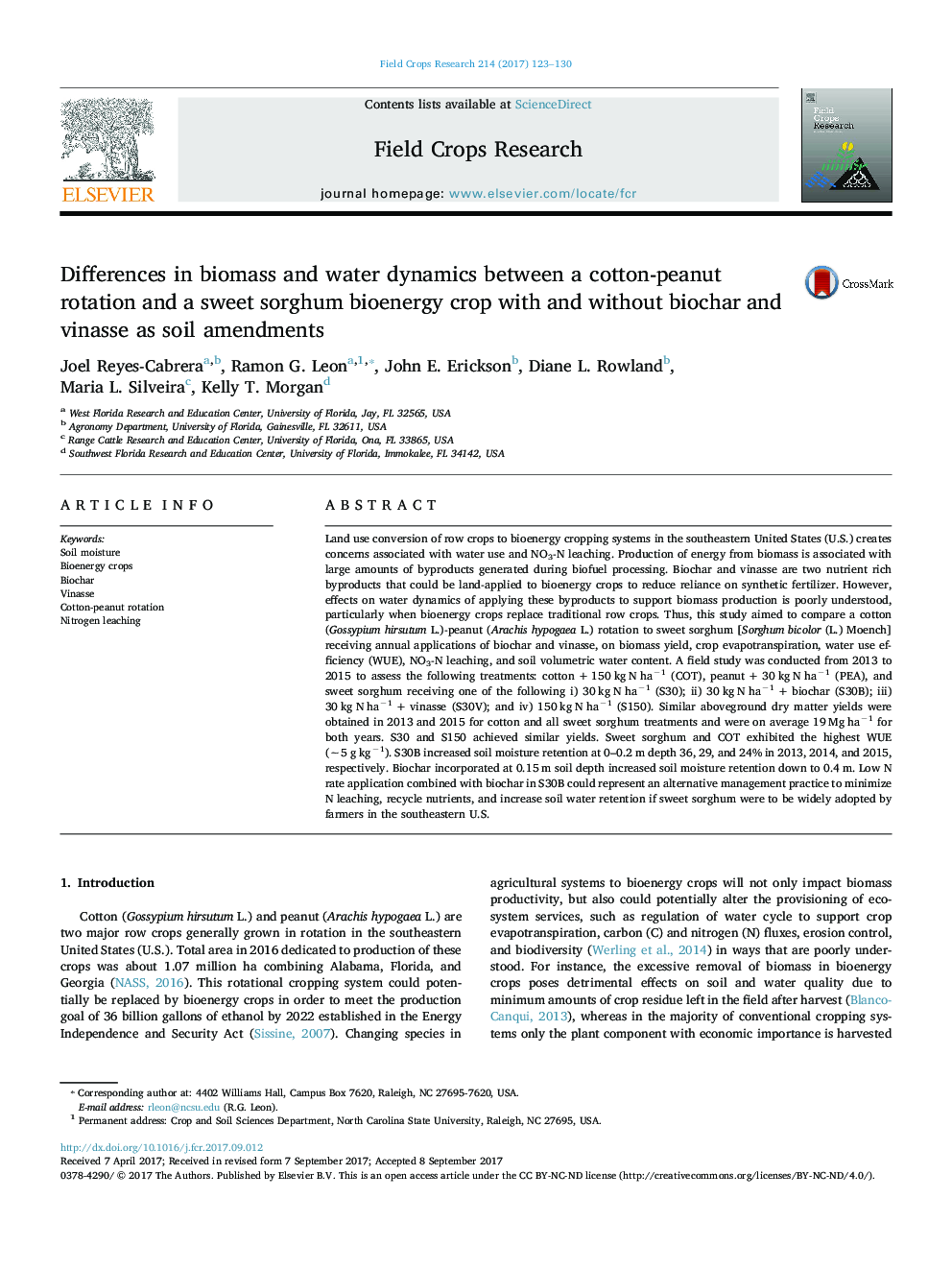| کد مقاله | کد نشریه | سال انتشار | مقاله انگلیسی | نسخه تمام متن |
|---|---|---|---|---|
| 5761377 | 1624649 | 2017 | 8 صفحه PDF | دانلود رایگان |
عنوان انگلیسی مقاله ISI
Differences in biomass and water dynamics between a cotton-peanut rotation and a sweet sorghum bioenergy crop with and without biochar and vinasse as soil amendments
ترجمه فارسی عنوان
تفاوت های زیست توده و پویایی آب بین چرخش پنبه ای بادام زمینی و یک محصول بیولوژیکی شیرین سورگوم با و بدون زیست تخریب و پودر به عنوان اصلاح خاک
دانلود مقاله + سفارش ترجمه
دانلود مقاله ISI انگلیسی
رایگان برای ایرانیان
کلمات کلیدی
موضوعات مرتبط
علوم زیستی و بیوفناوری
علوم کشاورزی و بیولوژیک
علوم زراعت و اصلاح نباتات
چکیده انگلیسی
Land use conversion of row crops to bioenergy cropping systems in the southeastern United States (U.S.) creates concerns associated with water use and NO3-N leaching. Production of energy from biomass is associated with large amounts of byproducts generated during biofuel processing. Biochar and vinasse are two nutrient rich byproducts that could be land-applied to bioenergy crops to reduce reliance on synthetic fertilizer. However, effects on water dynamics of applying these byproducts to support biomass production is poorly understood, particularly when bioenergy crops replace traditional row crops. Thus, this study aimed to compare a cotton (Gossypium hirsutum L.)-peanut (Arachis hypogaea L.) rotation to sweet sorghum [Sorghum bicolor (L.) Moench] receiving annual applications of biochar and vinasse, on biomass yield, crop evapotranspiration, water use efficiency (WUE), NO3-N leaching, and soil volumetric water content. A field study was conducted from 2013 to 2015 to assess the following treatments: cotton + 150 kg N haâ1 (COT), peanut + 30 kg N haâ1 (PEA), and sweet sorghum receiving one of the following i) 30 kg N haâ1 (S30); ii) 30 kg N haâ1 + biochar (S30B); iii) 30 kg N haâ1 + vinasse (S30V); and iv) 150 kg N haâ1 (S150). Similar aboveground dry matter yields were obtained in 2013 and 2015 for cotton and all sweet sorghum treatments and were on average 19 Mg haâ1 for both years. S30 and S150 achieved similar yields. Sweet sorghum and COT exhibited the highest WUE (â¼5 g kgâ1). S30B increased soil moisture retention at 0-0.2 m depth 36, 29, and 24% in 2013, 2014, and 2015, respectively. Biochar incorporated at 0.15 m soil depth increased soil moisture retention down to 0.4 m. Low N rate application combined with biochar in S30B could represent an alternative management practice to minimize N leaching, recycle nutrients, and increase soil water retention if sweet sorghum were to be widely adopted by farmers in the southeastern U.S.
ناشر
Database: Elsevier - ScienceDirect (ساینس دایرکت)
Journal: Field Crops Research - Volume 214, December 2017, Pages 123-130
Journal: Field Crops Research - Volume 214, December 2017, Pages 123-130
نویسندگان
Joel Reyes-Cabrera, Ramon G. Leon, John E. Erickson, Diane L. Rowland, Maria L. Silveira, Kelly T. Morgan,
